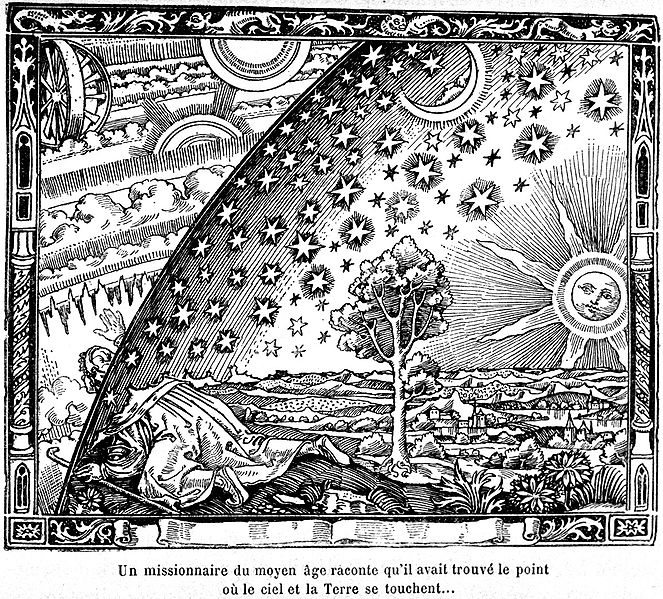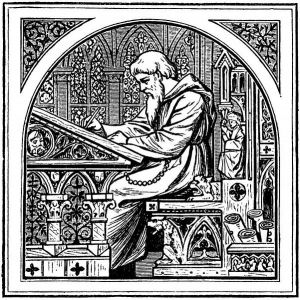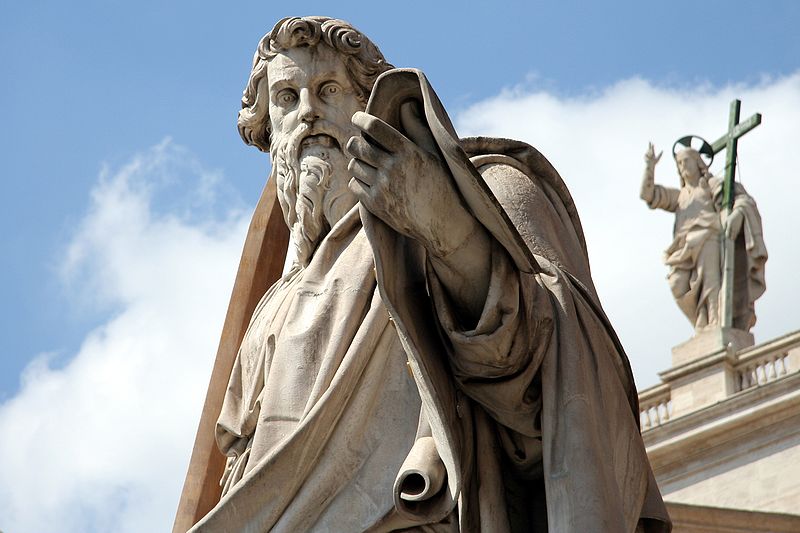As a first approximation, Easter takes place on the first Sunday after the first full moon after the spring (vernal) equinox. As it stands this would be relatively simple to calculate with very basic astronomical knowledge. But that would be too simple, so that the Church does not use data from the real universe but rather has constructed its own ecclesiastical calendar in which the date of the Paschal full moon is calculated. As the whole story goes well beyond a mere article I will restrict myself to the calculations used by the Church of Rome. Their excuse for not using an astronomical calculation for their festival is that they want all Christians to celebrate Easter on the same day throughout the world and that local variations of longitude will lead to different dates. The simple solution would be to set a meridian, such as Rome or Jerusalem, from which to make the calculations so that the real problem is a political one about where to set the Christian meridian. I shall return to this at the end.
 But let's start at the beginning; Easter is essentially a Christian Passover and its calculation has hence retained elements of the Hebrew calendar. The English word 'Easter' rather hides its Jewish origins but most Romance languages use words derived from Passover and the adjective 'paschal' retains this etymological link. The Old Testament mentions the feast of Passover and the Gospel of John also states that Jesus was crucified during Passover, and that the Last Supper was therefore a Passover Seder meal, thereby establishing the Judaic origins of this festival.
But let's start at the beginning; Easter is essentially a Christian Passover and its calculation has hence retained elements of the Hebrew calendar. The English word 'Easter' rather hides its Jewish origins but most Romance languages use words derived from Passover and the adjective 'paschal' retains this etymological link. The Old Testament mentions the feast of Passover and the Gospel of John also states that Jesus was crucified during Passover, and that the Last Supper was therefore a Passover Seder meal, thereby establishing the Judaic origins of this festival.In the Hebrew calendar Passover starts on a day known as Nisan 14, which is the first full moon after the vernal equinox. All that the Christians eventually did was move their feast to the next Sunday. But the early Christians actually relied on their Jewish neighbours to set the date for Easter so that it coincided with Passover. However, the Christians started to get angry when the Jews began declaring Passover before the equinox. But this is supposed to be a spring festival so how could this happen? Unless they got their calendar seriously muddled (there were lots of conflicting calendars around at the time), Jewish tradition also has it that the month of Nisan should not start until the barley is ripe, but rather than interpreting this as a necessary but not sufficient condition they would often go ahead and celebrate early if the barley ripened early. It is interesting to note that the Christians were more concerned about this than the Jews. In early Christianity Jesus was often represented as a sun deity akin to Apollo, so that celebrating the ascent to heaven while the Sun was still below the equatorial plane and in the twelfth house in the zodiac made no sense whatsoever to them.
Now, although the Romans were prone to mess around with their calendar for political reasons the Julian calendar was created in 45 BC and, after some more political messing around, eventually led to a stable solar calendar not very different to our Gregorian one. However, this wasn't good enough for the Christians because the Julian calendar ignored the lunar (or synodic) months that were needed to calculate Easter. So the Alexandrian Church devised its own ecclesiastical calendar which was later adopted by the Church of Rome. It is worth a pause here to consider the mathematical problem of devising a lunisolar calendar.
 The Julian and later Gregorian calendars are both solar as they ignore synodic months and the main aim is to keep the seasons stationary with respect to the calendar months. In contrast, the Islamic calendar is wholly lunar, so that their named months slowly move with respect to the Gregorian calendar so that Ramadan takes place at a slightly different time every year. But a lunisolar calendar, such as used by the Hebrews, Buddhists, early Christians and many others, needs to try and square the synodic months with the solar years in such a way as to still make the named months meaningful in terms of the season they are in.
The Julian and later Gregorian calendars are both solar as they ignore synodic months and the main aim is to keep the seasons stationary with respect to the calendar months. In contrast, the Islamic calendar is wholly lunar, so that their named months slowly move with respect to the Gregorian calendar so that Ramadan takes place at a slightly different time every year. But a lunisolar calendar, such as used by the Hebrews, Buddhists, early Christians and many others, needs to try and square the synodic months with the solar years in such a way as to still make the named months meaningful in terms of the season they are in.The problem is that a lunar month is about 29.531 days, resulting in about 12.3683 tropical months in a solar year. The aim is therefore to construct a calendar such that the number of synodic months and the number of days in a solar year are whole numbers and yet keep as close as possible to the natural cycles. This has led to numerous solutions; a popular cycle with an acceptably small error is the 19-year Metonic cycle with 235 synodic months (of either 29 or 30 days) plus 7 extra (intercalary or embolismic) months. This means that the length of calendar 'lunar year' could be as short as 354 days and as long as 385! This is indeed the Alexandrian method published in 525 by Dionysius Exiguus and later adopted by the Church of Rome, with a mapping onto the civil Julian calendar. This meant that the Church used its ecclesiastical calendar running parallel to the civil calendar. St Bede also adopts this method and it may even have been used by Charlemagne on the advice of Alcuin of York.
This 19-year cycle creates a sequence of lunar months that approximate roughly to observed lunar cycles (being out by a day or, rarely, two, with respect to observations at the Greenwich meridian). The first day of each ecclesiastical lunar month is the day of the ecclesiastical new moon. The 14th day of each month is considered the day of the full moon. Each year one new moon falls within the dates of 8 March and 5 April inclusive; this defines the Paschal new moon. The Paschal full moon is 13 days later (on the 14th day), therefore between the 21 March and 18 April inclusive. Easter then falls on the following Sunday, therefore between 22 March and 25 April at the latest. If the Paschal full moon falls on a Sunday then Easter is the following Sunday.
 On the face of it, this arrangement seemed to work. The Church kept control of its ecclesiastical calendar and hence set the dates for various feasts, and although it was slightly out of synch with the real world that didn't trouble the faithful. However, both the Julian and ecclesiastical calendars were so successful that the small errors became noticeable over the centuries. In 1582 the Gregorian calendar was introduced by Pope Gregory XIII, which we still use today, but less well known is that the lunisolar ecclesiastical calendar was also changed. The work of Aloysius Lilio and the mathematician Christopher Clavius resulted in a highly intricate system of 'epacts' assigned to each year from which Easter could be calculated. The theory espoused by Clavius ran to 800 pages, so I'm happy to let Wikipedia provide a concise summary. The Church also consulted with other mathematicians and astronomers, some of whom gave the sensible advice of scrapping the ecclesiastical calendar and using real astronomical data. The Church refused to consider this, and continues to do so for what must be reasons of power and politics. Interesting that during the 18th century some Protestant countries preferred to use Kepler's Rudolphine Tables to calculate Easter rather than the Roman Catholic calendar.
On the face of it, this arrangement seemed to work. The Church kept control of its ecclesiastical calendar and hence set the dates for various feasts, and although it was slightly out of synch with the real world that didn't trouble the faithful. However, both the Julian and ecclesiastical calendars were so successful that the small errors became noticeable over the centuries. In 1582 the Gregorian calendar was introduced by Pope Gregory XIII, which we still use today, but less well known is that the lunisolar ecclesiastical calendar was also changed. The work of Aloysius Lilio and the mathematician Christopher Clavius resulted in a highly intricate system of 'epacts' assigned to each year from which Easter could be calculated. The theory espoused by Clavius ran to 800 pages, so I'm happy to let Wikipedia provide a concise summary. The Church also consulted with other mathematicians and astronomers, some of whom gave the sensible advice of scrapping the ecclesiastical calendar and using real astronomical data. The Church refused to consider this, and continues to do so for what must be reasons of power and politics. Interesting that during the 18th century some Protestant countries preferred to use Kepler's Rudolphine Tables to calculate Easter rather than the Roman Catholic calendar.In 1997 the World Council of Churches met in Aleppo and agreed to promote an astronomically correct date for Easter based on our initial naïve definition of the first Sunday after the first full moon after the vernal equinox but based on the meridian at Jerusalem. In the year 2001 the Western and Eastern Churches shared a common date for Easter so this was hoped to be a sign that it was time for a sensible solution. Nothing happened. But actually, in spite of the different calendars and different methods of calculation the Western and Eastern dates for Easter coincide more often than one might expect; in 2010 both are on 4 April and in 2011 both are on 24 April. The idea that the priest with the calendar holds some power over the people has truly gone so perhaps a good time to put to rest the ghost of an ecclesiastical calendar.



Comments